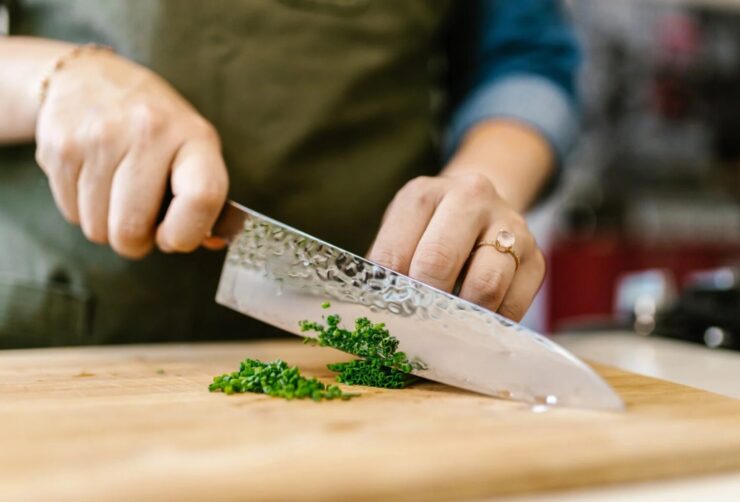The use of knives, a fundamental kitchen tool, can form the foundation of any cooking endeavor. Being able to skillfully and safely wield a knife can significantly enhance the cooking experience. Moreover, it can affect the taste and visual appeal of the dish, as the way ingredients are cut can affect their flavor and cooking times. Mastering knife skills is therefore not only a question of efficiency and safety but it’s also essential when striving for culinary excellence.
Understanding the essential knife techniques is the first step to a more effective, robust, and ultimately safer kitchen experience. This guide is designed to provide practical, hands-on advice to improve your kitchen skills. Utilizing the correct knives, holding them correctly, and mastering a variety of techniques does require practice. Nonetheless, with patience and persistence, these skills are more than achievable for aspiring home chefs. This guide aims to provide the knowledge and direction to assist in conquering this culinary frontier.
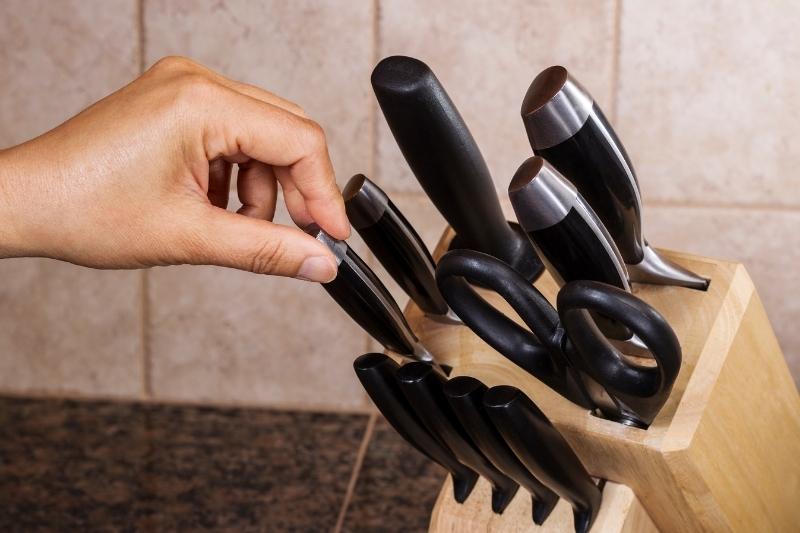
Choosing the Right Knife
Getting started with developing your knife skills begins with und erstanding and selecting the right type of knife for the job. Different knives are designed for different tasks – from deboning a chicken to finely chopping herbs – and using the right one can make a significant difference to your cooking. It’s worth investing in a few good-quality knives that are versatile and fit well in your hand. A chef’s knife, paring knife, bread knife, and a Damascus knife are just a few different types of knives one can choose from.
Important factors to consider when choosing a knife include the blade material (high-quality stainless steel is recommended), weight, balance, and handle comfort. The knife should feel comfortable and balanced in your hand; if it feels too heavy or light, it can affect your control over the chopping motion. Furthermore, a sharp knife is safer than a dull one since it requires less force, offering more control. By choosing a suitable knife, you are providing yourself with the necessary tool to improve your kitchen efficiency and safety.
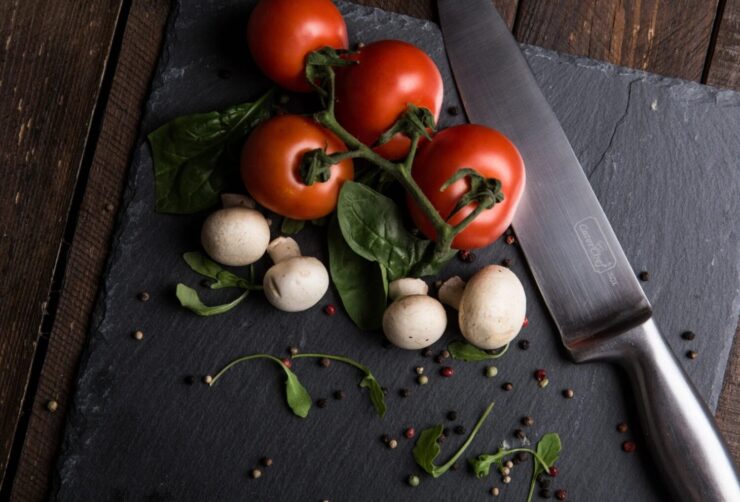
Basic Knife Techniques
Once you have chosen your ideal knife, it’s time to familiarize yourself with basic knife skills. A good starting point is understanding the differences between dicing, slicing, and chopping. All three methods require the same fundamental skill set but differ in application. Slicing is generally used to cut thin, somewhat wide pieces of food, most commonly fruits and vegetables. Chopping, on the other hand, involves larger, more uneven cuts, and dicing typically refers to cutting food into small, equal-sized cubes. Knowing when to use which technique will eventually become second nature as you increase your culinary experience.
Practice is key when it comes to mastering these basic knife techniques. Start by slicing and dicing easy-to-handle fruits and vegetables like carrots, cucumbers or apples, and gradually progress to more challenging ones. Remember, patience and consistency play a part in improving your skills. The key is to find a rhythm that allows you to make each cut confidently and safely. Perfecting these fundamental skills sets the groundwork for more complex techniques in professional-level recipes and ensures you’re equipped to effectively and efficiently handle any recipe that comes your way.
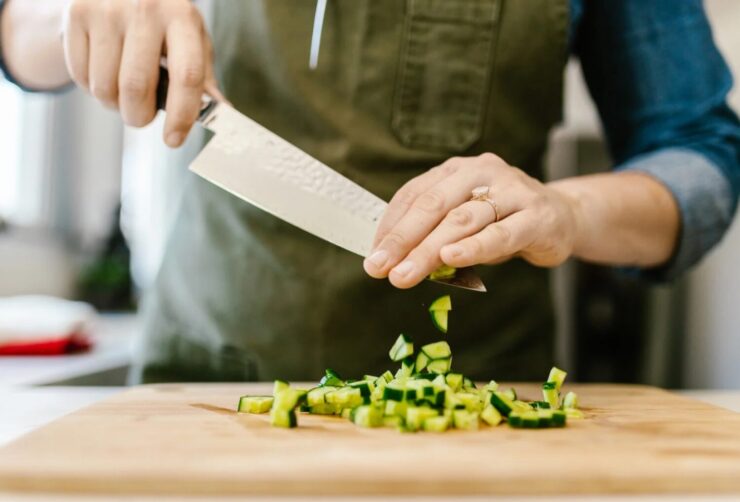
Advanced Knife Techniques
Once you’ve mastered the basic knife techniques, you can progress to more complex cutting styles. These advanced skills will enhance your food presentation and allow you to explore new textures and flavors in your cooking. Among these, julienning, chiffonading, and brunoising are techniques common in professional kitchens. Julienne involves cutting food into thin, uniform matchstick strips. Chiffonade refers to slicing leafy vegetables or herbs into thin, long ribbons; and brunoise is a fine dice, usually 2 millimeters cubes. While these techniques may seem daunting initially, they contribute to a refined and professional appearance of your final dish.
Adopting these advanced knife techniques will not only refine your culinary skills and presentation, but also help you maximize your ingredients’ flavors. Remember, mastering these advanced techniques requires patience and practice as they are more detailed than basic skills. Take your time, don’t risk injury by accelerating the process. Over time, these skills will become second nature, offering new opportunities for your culinary experiments.
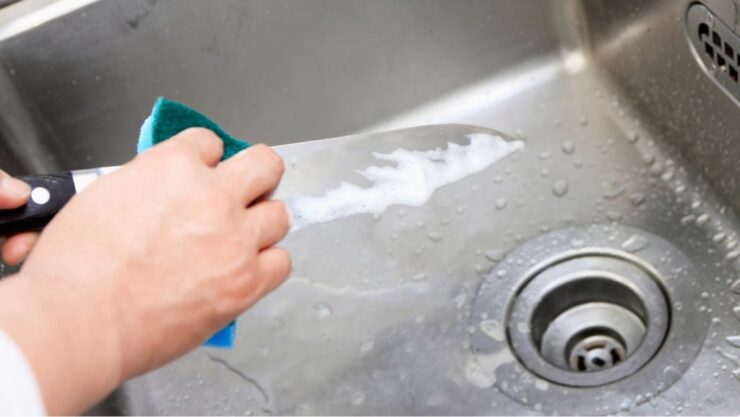
Knife Care and Maintenance
Taking care of your knives is just as important as mastering the techniques to use them. Proper knife maintenance extends the life of your knives, keeps them sharp, and ensures your safety when handling them. When it comes to cleaning, it’s best to wash knives by hand with warm soapy water, then dry them immediately to avoid rusting. Never put knives in a dishwasher, as the harsh detergents and high temperatures can damage the blade’s edge and handle.
Keeping your knives sharp is an essential component to knife care. A dull knife requires more force to cut through food, making it less secure and more likely to cause an injury. Invest in a quality knife sharpener or honing steel, and learn how to use it properly to keep your blades in top condition. Alternatively, consider professional knife sharpening services. Lastly, correct storage of your knives is important. Instead of tossing them in a drawer, use a knife block, magnetic strip, or individual blade guards to protect the edges. These simple measures of knife care and maintenance can help keep your knives efficacious for years.
Investing time and effort into mastering your knife skills is incredibly rewarding. Remember that like any new skill, it requires practice and patience, so don’t be disheartened if you find some techniques challenging initially. Keep refining your skills, maintaining your knives with care, and practicing safe techniques. Ultimately, the goal is to enhance your confidence and prowess in the kitchen, making cooking an easier and even more enjoyable endeavor.

